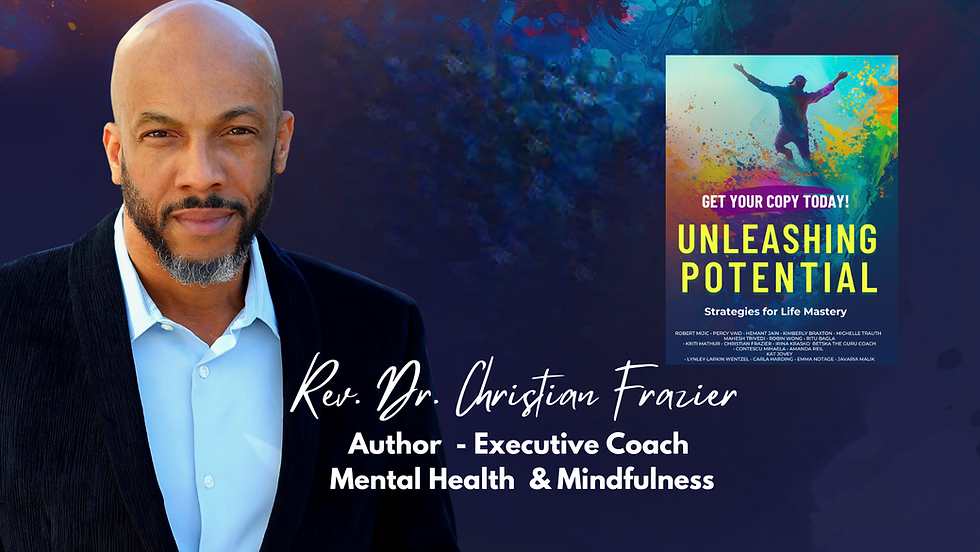Trauma Bonds: Understanding and Healing
- Christian Frazier

- Feb 13, 2023
- 3 min read
Updated: Feb 7, 2024

Trauma Bonds: What They Are and How to Heal
By Rev. Dr. Christian Frazier
Mental Health Life Coach
Trauma bonds are a type of attachment that forms between individuals who have experienced trauma together. These bonds are formed as a result of a shared experience of pain, fear, or danger, and they can be incredibly strong and difficult to break. They can occur in relationships of all kinds, including romantic relationships, friendships, familial relationships, and even relationships between a victim and their abuser.
Identifying a Trauma Bond
It can be challenging to identify if you are in a trauma bond because these bonds are often disguised as healthy relationships. However, there are several red flags that you can look for to determine if you are in a trauma bond. Some of these include:
Feeling like you can’t leave the relationship, even though it’s damaging to your mental and emotional health.
Feeling like you’re the only one who understands the other person or their experiences.
Experiencing intense feelings of guilt or shame when you try to leave the relationship.
Finding yourself repeatedly drawn back into the relationship despite your best efforts to leave.
Feeling like you need to protect the other person, even if it means sacrificing your own well-being.
Experiencing intense feelings of fear or anxiety when you think about leaving the relationship.
Feeling like you’re “trapped” in the relationship and like you have no other options.
Healing from a Trauma Bond
Breaking free from a trauma bond can be difficult, but it is possible. Here are seven ways to heal from a trauma bond:
Seek support from friends, family, or a therapist. Having a support system can help you stay strong as you work to heal and rebuild your life.
Educate yourself about trauma bonds and the impact they can have on your life.
Work on developing a strong sense of self-worth and self-esteem. This can help you recognize that you deserve to be in a healthy, supportive relationship.
Set boundaries with the person you’re in a trauma bond with, and stick to them.
Work through your feelings of guilt, shame, and anxiety with a therapist or other mental health professional.
Practice self-care and prioritize your mental and emotional well-being.
Seek out new relationships and experiences that bring you joy and fulfillment.
Breaking free from a trauma bond is not easy, but it is possible. With the right support and resources, you can heal from your past experiences and build a healthier, happier life for yourself.
In addition to the steps outlined above, working with a life coach can provide additional support and guidance as you heal from a trauma bond. A life coach can help you set and achieve your personal and professional goals, develop a strong sense of self-worth and self-esteem, and provide accountability as you work to break free from the toxic relationship.
By combining therapy with life coaching, you can receive a well-rounded approach to healing and find the support and encouragement you need to build a better life for yourself. A life coach can provide you with practical tools, techniques, and strategies to help you overcome the challenges you face and reach your full potential. Whether you're looking to improve your self-confidence, make a big change, or simply create a better future for yourself, a life coach can be a valuable asset in your journey to healing.



Comments